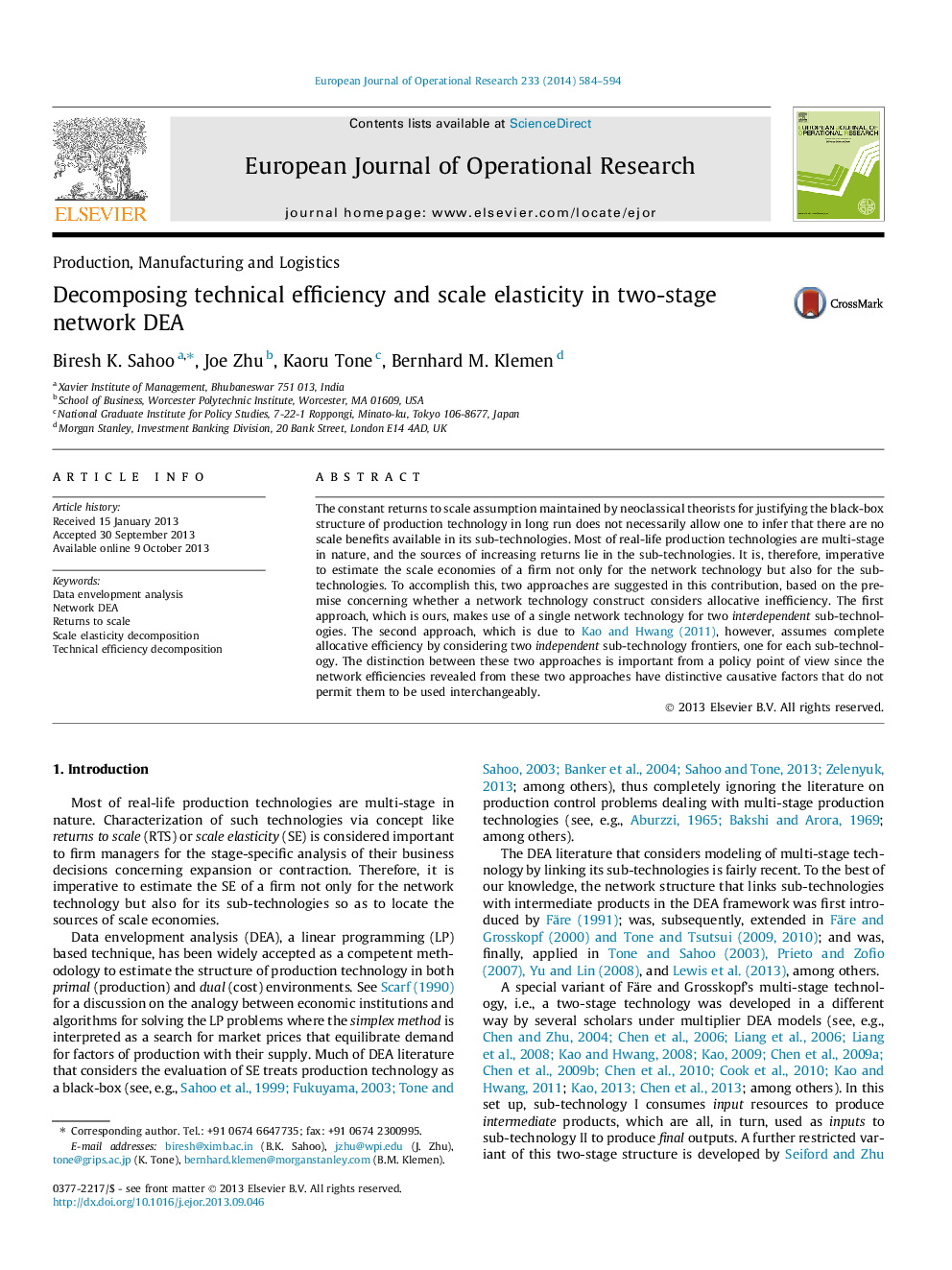| Article ID | Journal | Published Year | Pages | File Type |
|---|---|---|---|---|
| 6897676 | European Journal of Operational Research | 2014 | 11 Pages |
Abstract
The constant returns to scale assumption maintained by neoclassical theorists for justifying the black-box structure of production technology in long run does not necessarily allow one to infer that there are no scale benefits available in its sub-technologies. Most of real-life production technologies are multi-stage in nature, and the sources of increasing returns lie in the sub-technologies. It is, therefore, imperative to estimate the scale economies of a firm not only for the network technology but also for the sub-technologies. To accomplish this, two approaches are suggested in this contribution, based on the premise concerning whether a network technology construct considers allocative inefficiency. The first approach, which is ours, makes use of a single network technology for two interdependent sub-technologies. The second approach, which is due to Kao and Hwang (2011), however, assumes complete allocative efficiency by considering two independent sub-technology frontiers, one for each sub-technology. The distinction between these two approaches is important from a policy point of view since the network efficiencies revealed from these two approaches have distinctive causative factors that do not permit them to be used interchangeably.
Related Topics
Physical Sciences and Engineering
Computer Science
Computer Science (General)
Authors
Biresh K. Sahoo, Joe Zhu, Kaoru Tone, Bernhard M. Klemen,
